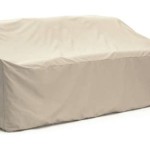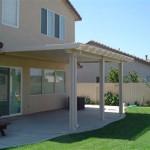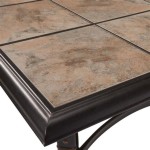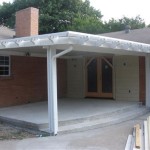Outdoor Electric Patio Heaters: A Guide to Choosing the Right One
As the days grow shorter and the temperatures drop, many homeowners find themselves longing to extend their time spent outdoors. Outdoor electric patio heaters offer a solution, providing warmth and ambiance to patios, decks, and other outdoor living spaces. These heaters come in various styles and sizes, each with its own set of benefits and drawbacks. This guide examines the key features to consider when choosing an electric patio heater and explores the different types available to help you make an informed decision for your specific needs.
Types of Outdoor Electric Patio Heaters
Outdoor electric patio heaters come in several main types, each with its own unique characteristics:
- Free-Standing Heaters: These are standalone units that can be placed anywhere on a patio or deck. They are typically equipped with a base for stability and a pole or stand to raise the heating element. Free-standing heaters are generally more affordable than other types and offer greater versatility with placement.
- Wall-Mounted Heaters: Wall-mounted heaters are a space-saving option, as they are fixed to a wall or other vertical surface. They are primarily used for focused heating of a specific area, such as a seating area or dining table. These heaters are often more aesthetically pleasing than free-standing models, blending well with many outdoor decor styles.
- Umbrella Heaters: These innovative heaters are designed to be mounted to the top of a patio umbrella. They provide a 360-degree heat distribution, making them ideal for large gatherings. Umbrella heaters offer a high degree of portability as they can be easily moved with the umbrella.
- Hanging Heaters: Similar to umbrella heaters, hanging heaters are suspended from a ceiling or other overhead structure. This design allows for flexibility in placement and a modern, minimalist aesthetic. They are commonly found in covered patios and outdoor dining areas.
Key Features to Consider When Choosing an Electric Patio Heater
Deciding on the right electric patio heater requires careful consideration of several crucial features:
1. Heating Element
The heating element is the core component of any patio heater. There are two primary types available:
- Quartz Tube Heaters: Quartz tube heaters use infrared radiation to produce heat. They heat objects directly, making them very efficient and providing fast heat. Quartz tube heaters are generally more affordable than other types and have a longer lifespan.
- Ceramic Heaters: Ceramic heaters offer a more even and consistent heat distribution than quartz tube heaters. They are also known for their durability and resistance to rust and corrosion.
2. Heat Output
The heat output of a patio heater is measured in BTUs (British thermal units), which indicate the amount of heat produced per hour. The required heat output depends on several factors, including the size of the space to be heated, the climate, and the desired level of warmth. For smaller areas like a cozy patio seating area, heaters in the range of 4,000-6,000 BTUs may suffice. Larger spaces, such as decks or pergolas, may require heaters with a heat output of 10,000 BTUs or more.
3. Safety Features
Safety should be a paramount concern when selecting an outdoor electric patio heater. Look for features such as:
- Tip-Over Protection: This feature automatically shuts off the heater if it becomes tilted or overturned, preventing fires or accidents.
- Overheat Protection: Overheat protection ensures that the heater turns off if it reaches an unsafe temperature, reducing the risk of overheating and potential damage.
- Flame-Resistant Materials: Heating elements and housing materials should be flame-resistant to minimize the risk of fire hazards.
4. Energy Efficiency
Electric patio heaters are known for their energy efficiency compared to other heating solutions, such as propane or natural gas heaters. However, the energy efficiency of a specific heater can vary significantly. Factors to consider include the type of heating element, heating output, and any additional features that may consume more energy. Look for models with energy-saving features like adjustable heat settings or timers to minimize energy consumption and save on operating costs.
5. Aesthetics and Design
Patio heaters can come in various styles and designs. Consider the overall aesthetic of your outdoor space and choose a heater that complements the existing decor. Factors to consider include the heater's size, color, and materials. Modern, sleek designs are available to suit contemporary spaces, while traditional, rustic styles can complement more traditional outdoor spaces.
Conclusion
Choosing the right outdoor electric patio heater can significantly enhance your enjoyment of outdoor spaces, extending those moments of relaxation and socializing even as temperatures drop. By understanding the key features and considering the specific needs of your situation, you can make an informed decision that ensures a warm and welcoming outdoor experience for years to come.

Outdoor Electric Patio Heater Event Als Premiere Events

The 2 Best Outdoor Patio Heaters Of 2024 Reviews By Wirecutter

1500 Watt Free Standing Infrared Electric Patio Heater Hil 1500di The Home Depot

The 2 Best Outdoor Patio Heaters Of 2024 Reviews By Wirecutter

Bromic Tungsten Smart Heat 6000 Watt 208v Infrared Electric Patio Heater Black 56 In Radiant Bh0420035 Fireplaces Depot

Gymax Wall Mounted Electric Heater Patio Infrared W Remote Control Com

Kenmore 1500 Watt Indoor Outdoor Carbon Infrared Electric Patio Heater With Tripod And Remote Silver Kh 7e01 Sstp The Home Depot

Electric Patio Heater Guide Woodlanddirect Com
.jpeg?strip=all)
Paragon Outdoor Shine 32 000 Btu Propane Gas Flame Tower Portable Patio Heater Hammered Broe Oh M744b Bbqgrills Com

Warm Living Electric 1500w Outdoor Adjustable Height Patio Heater With Remote And Digital Timer Com








